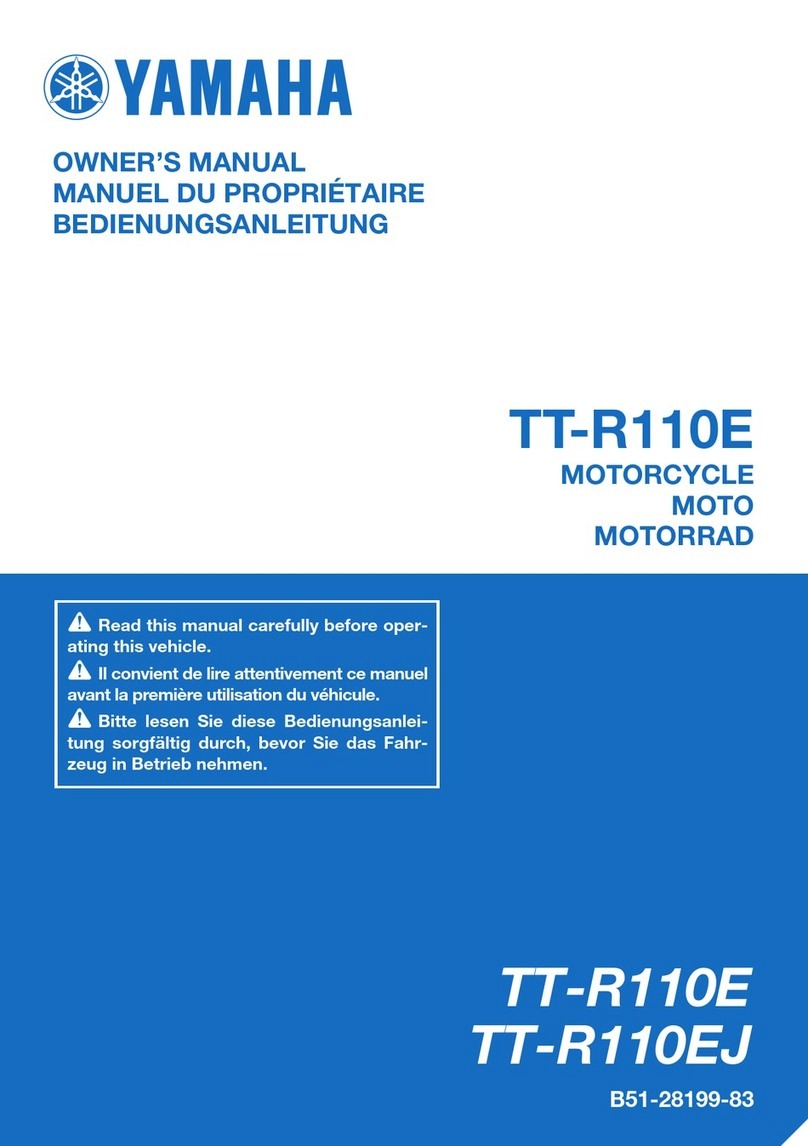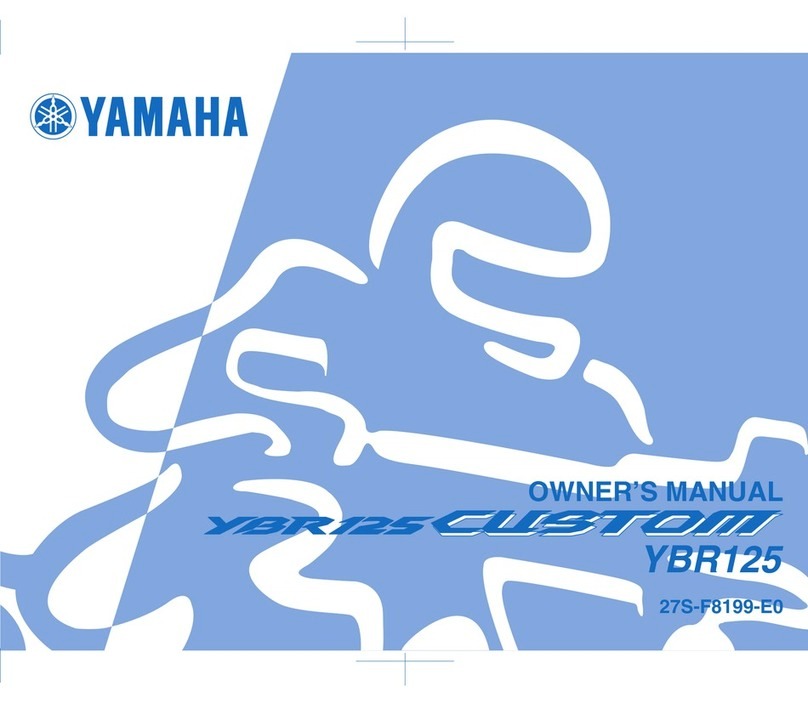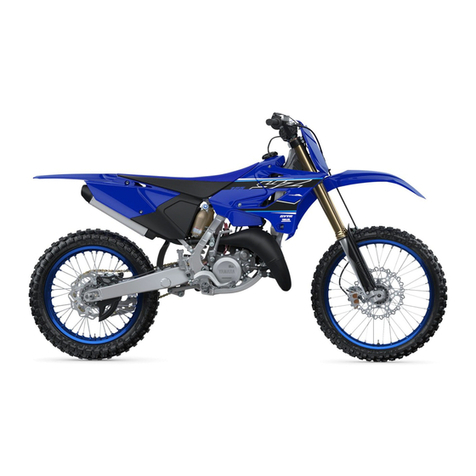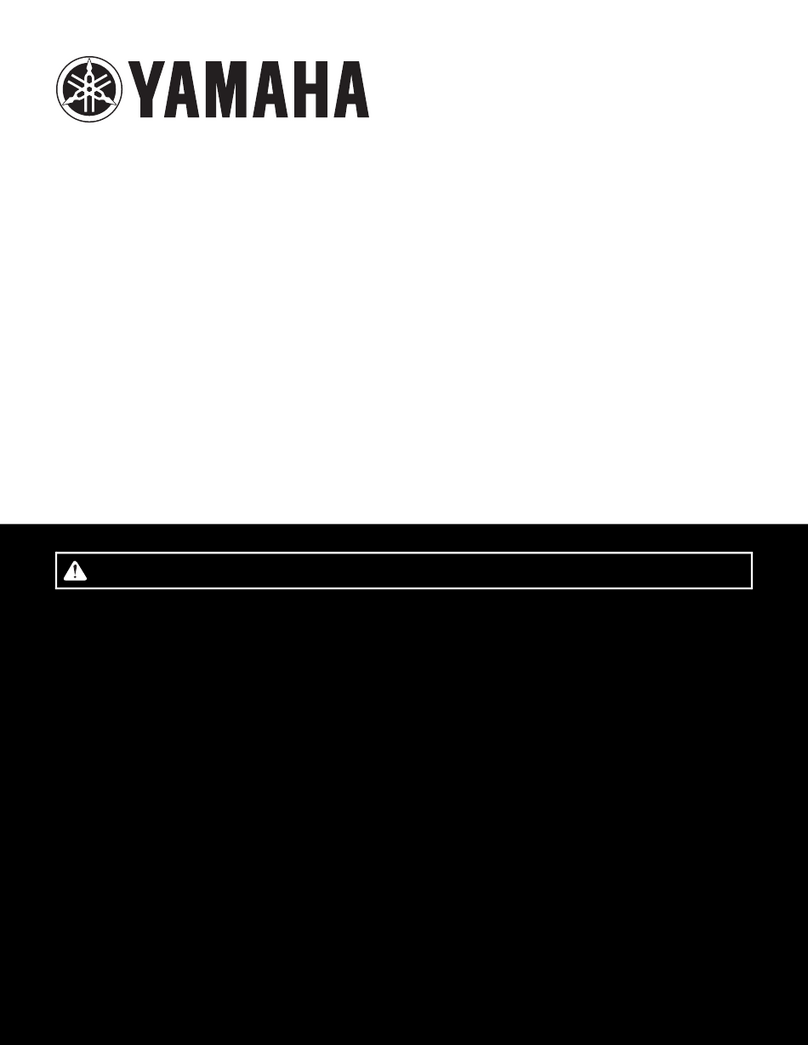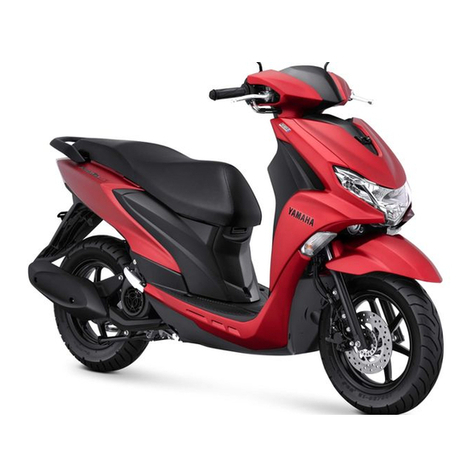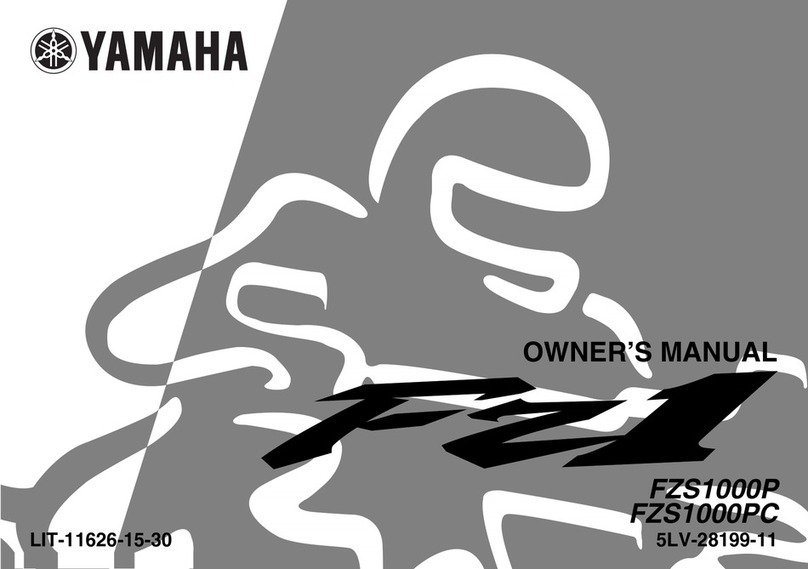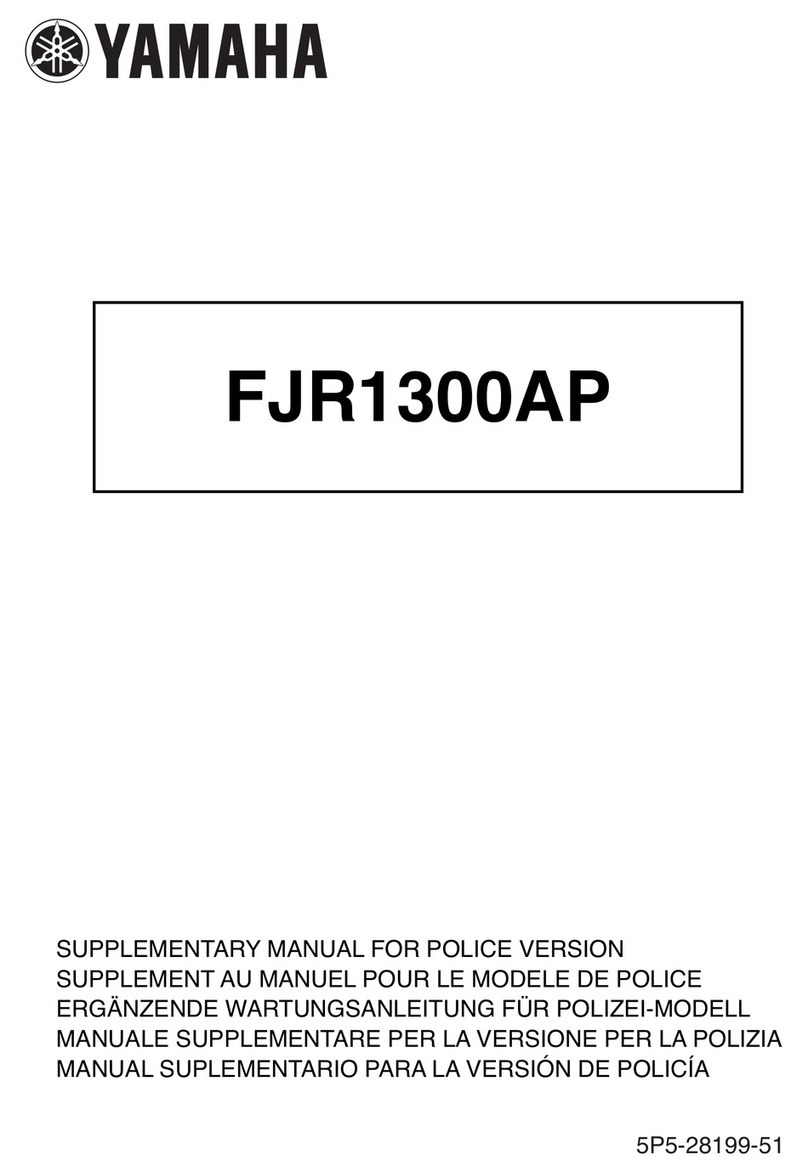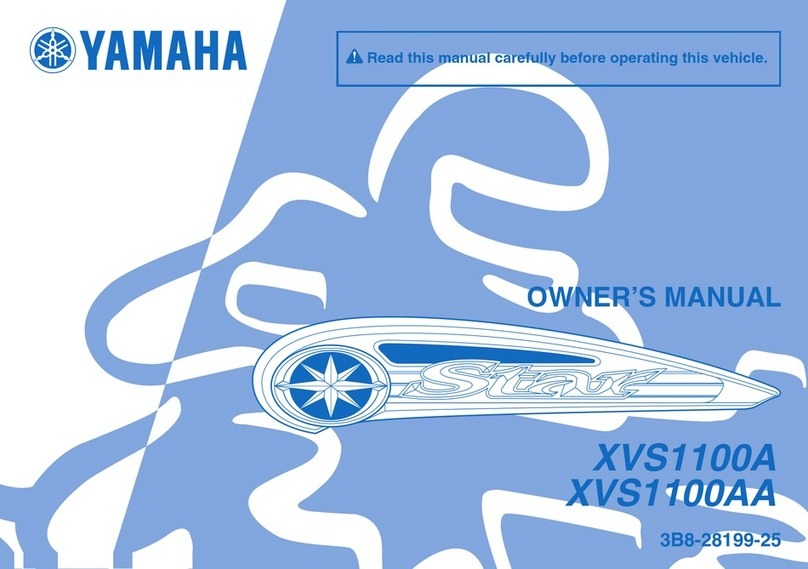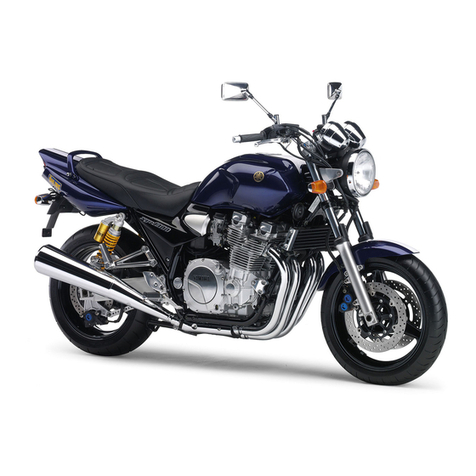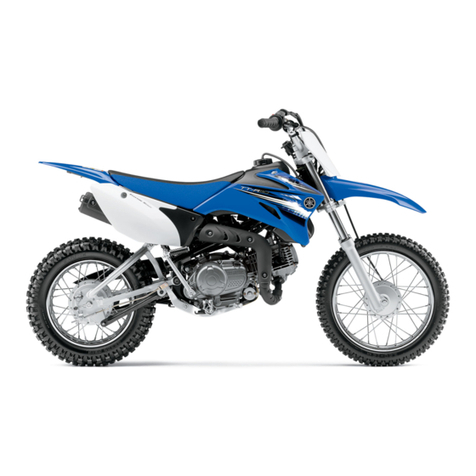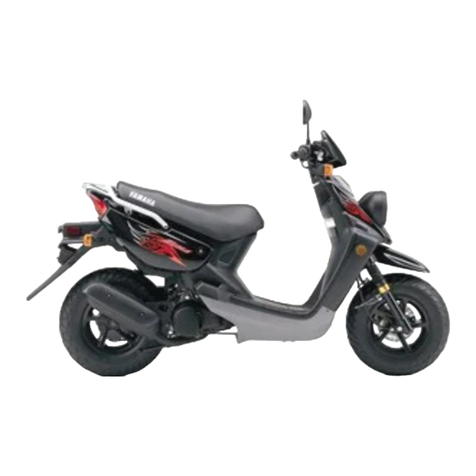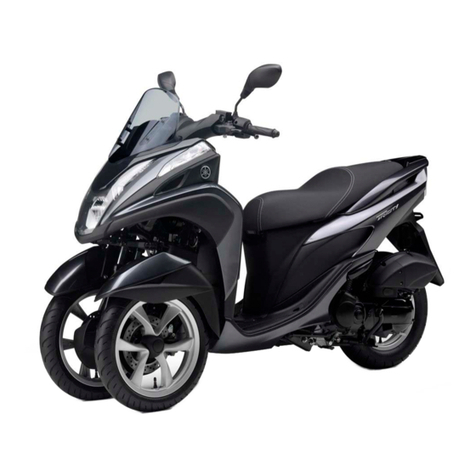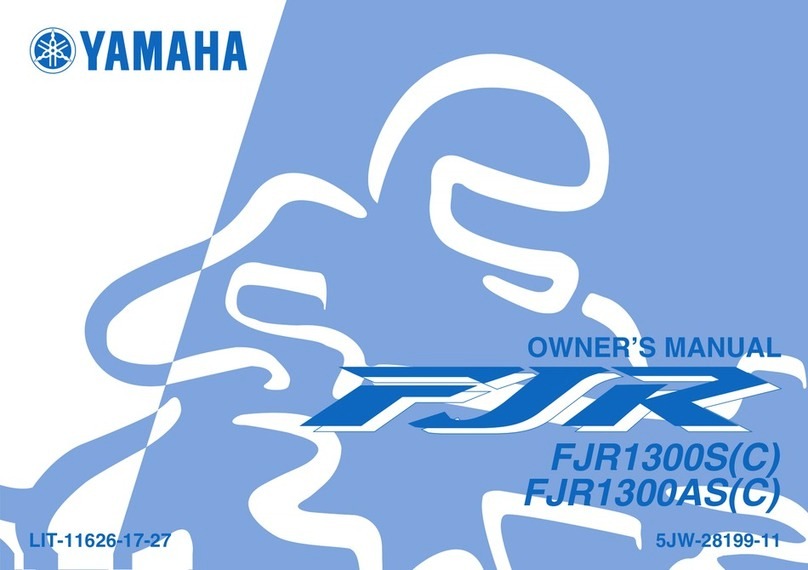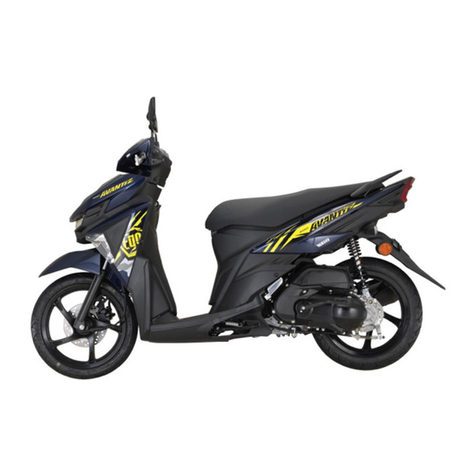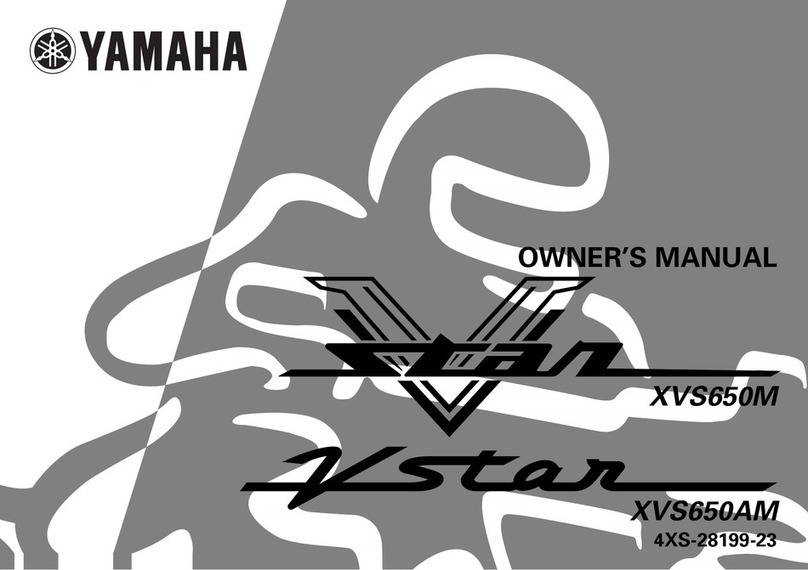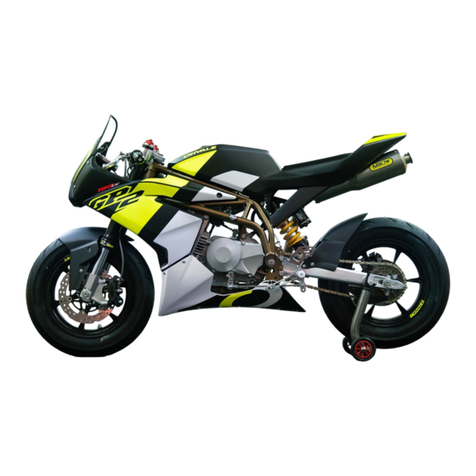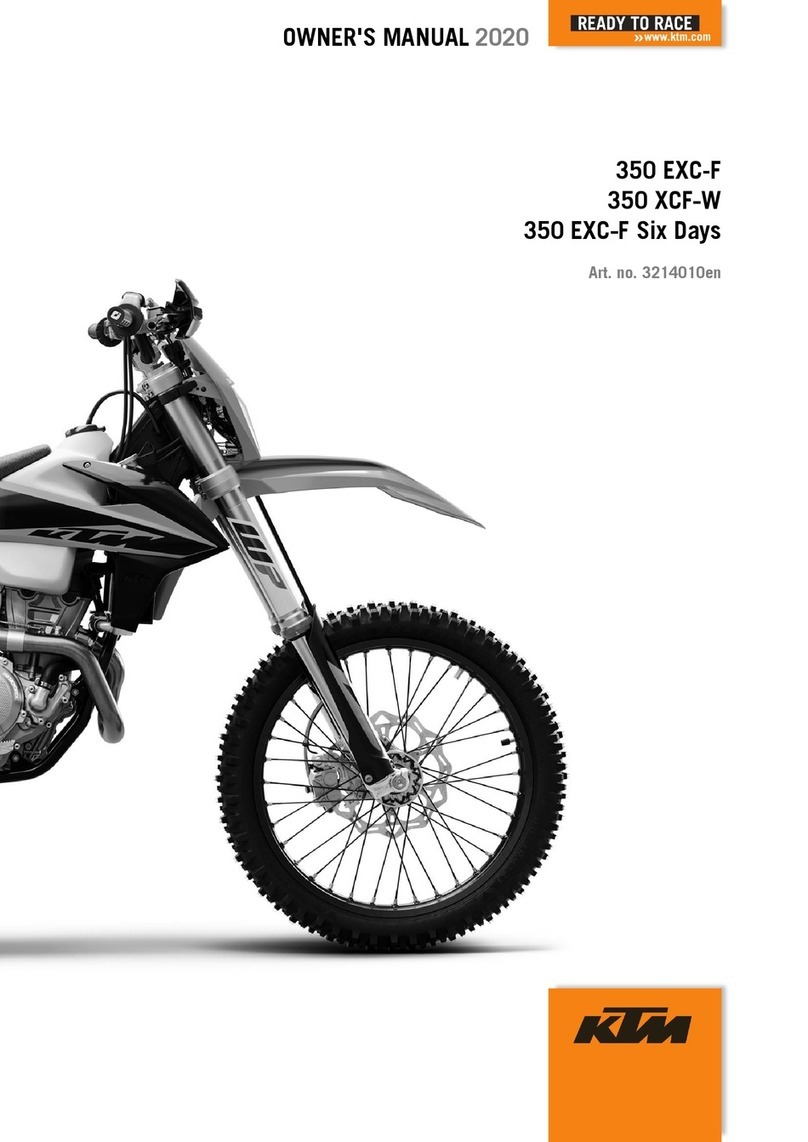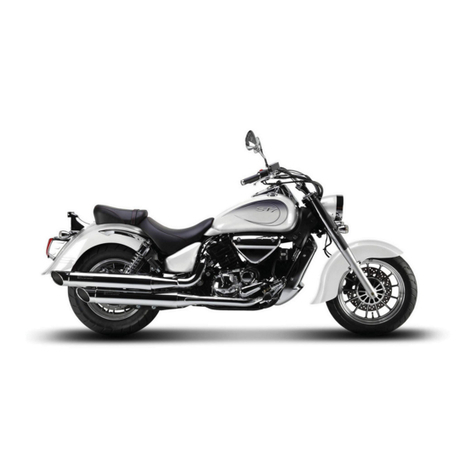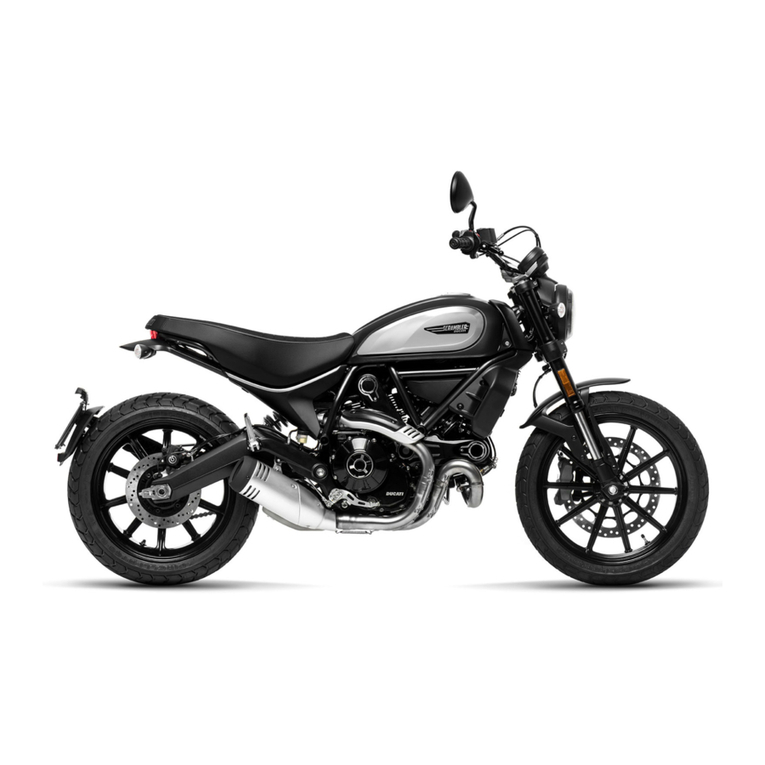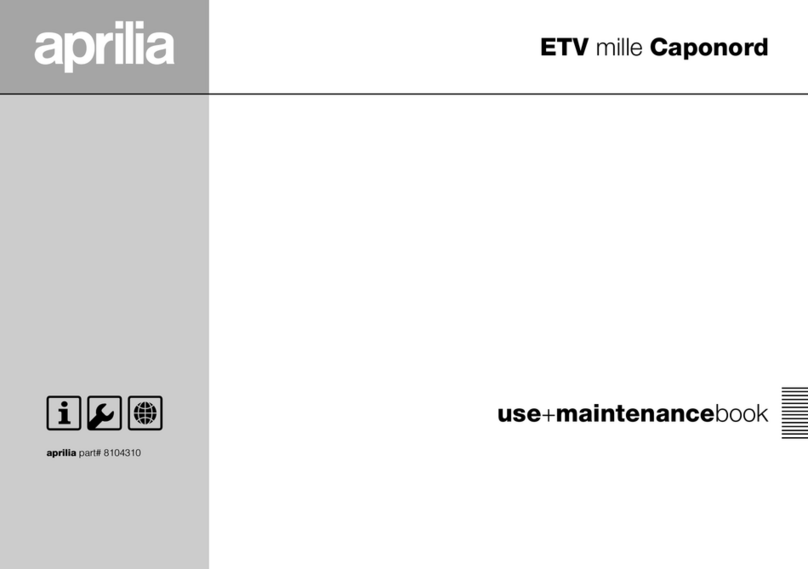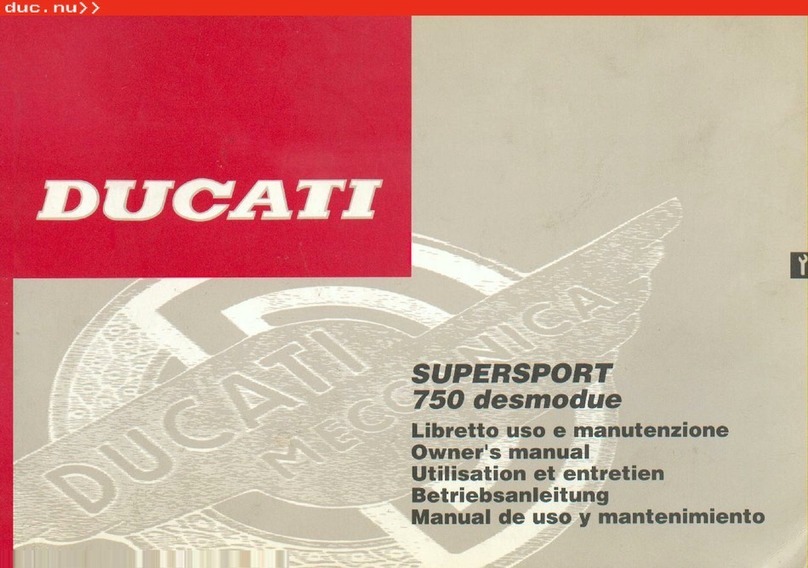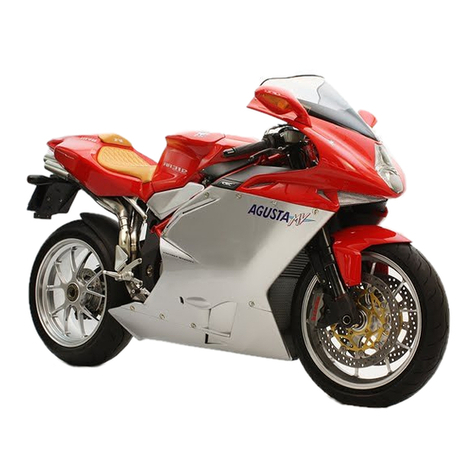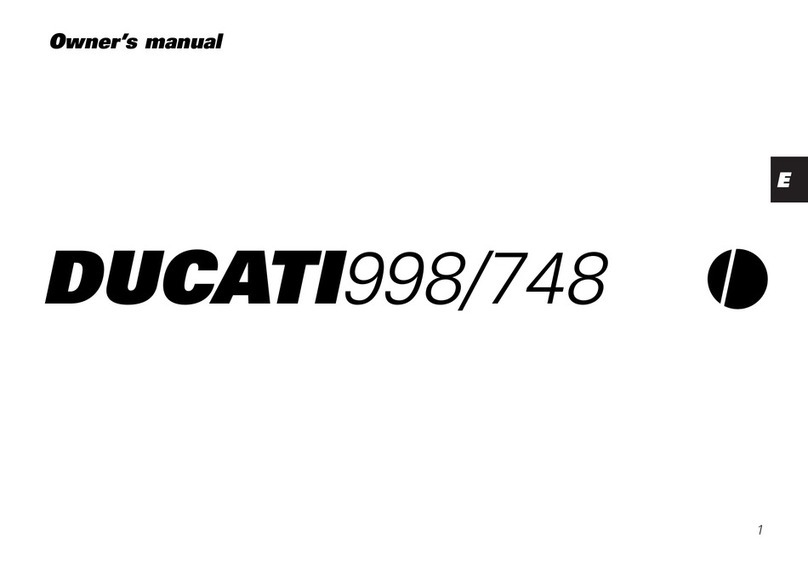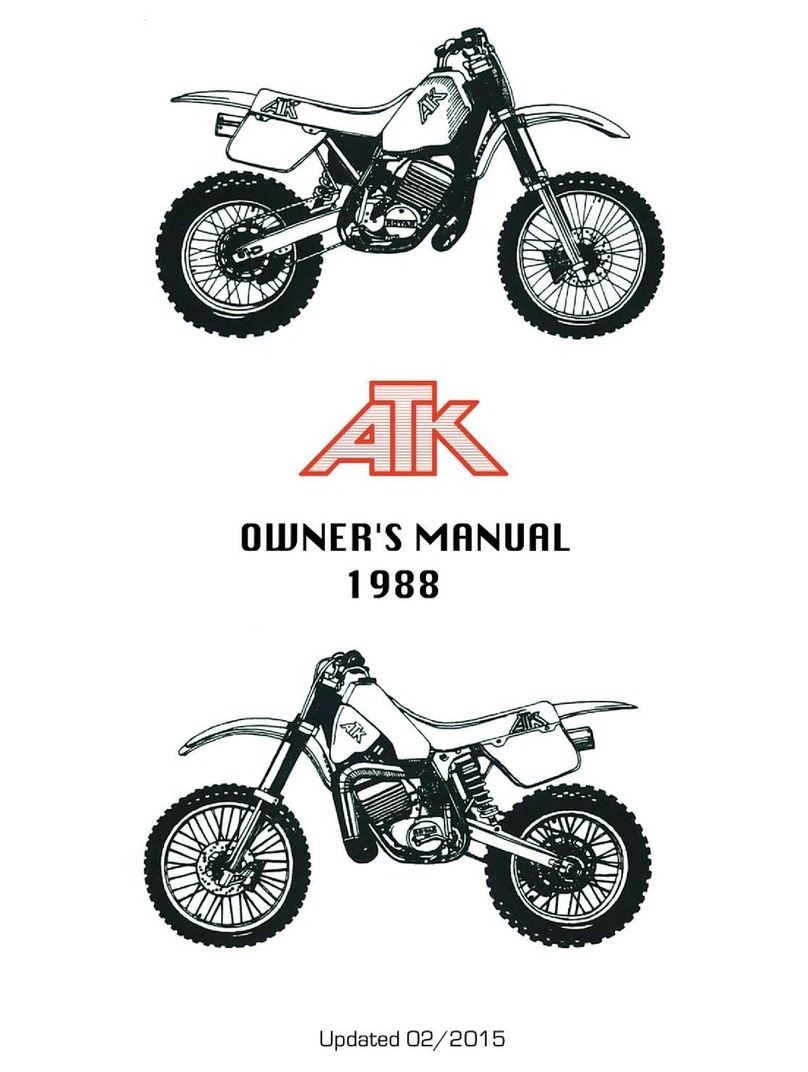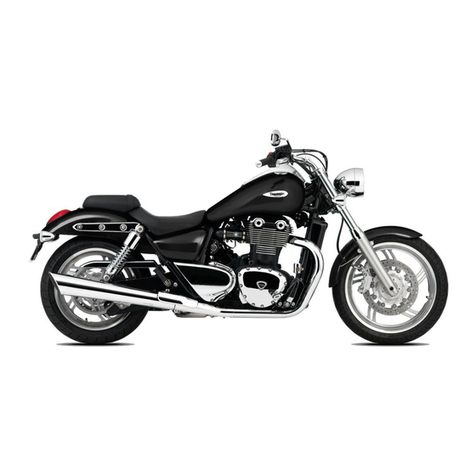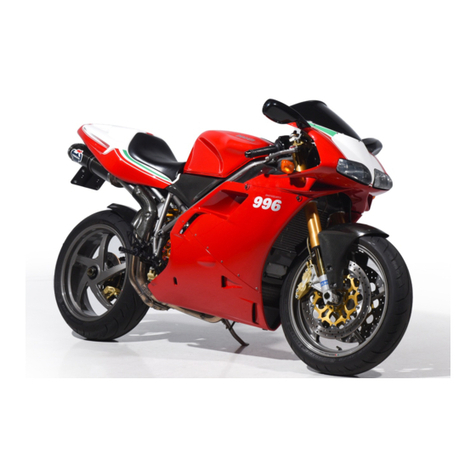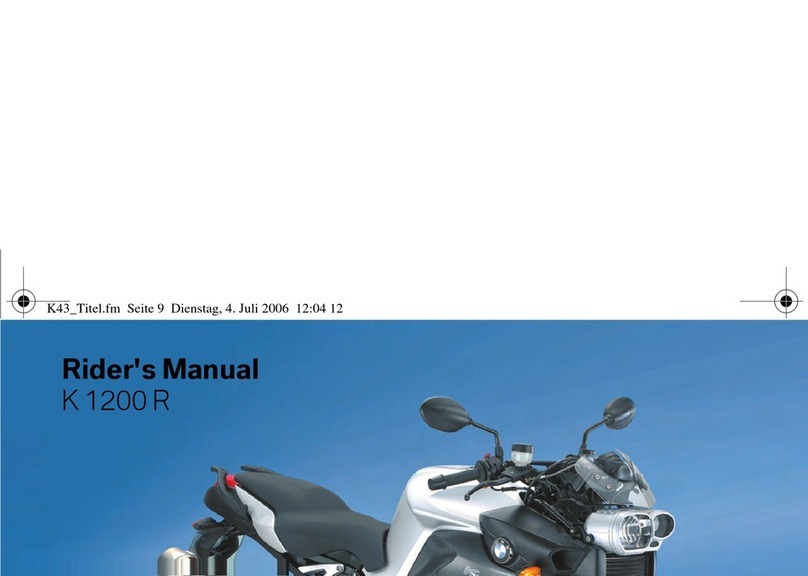
Table of contents
Location of important labels ........... 1-1
Safety information............................ 2-1
Helmets .......................................... 2-5
Description ....................................... 3-1
Left view ......................................... 3-1
Right view....................................... 3-2
Controls and instruments ............... 3-3
Instrument andcontrol functions... 4-1
Immobilizer system......................... 4-1
Main switch/steering lock............... 4-2
Indicator lights and warning
lights............................................ 4-3
Speedometer unit........................... 4-4
Tachometer .................................... 4-5
Handlebar switches........................ 4-5
Clutch lever .................................... 4-6
Shift pedal ...................................... 4-7
Brake lever...................................... 4-7
Brake pedal .................................... 4-7
Fuel tank cap.................................. 4-8
Fuel................................................. 4-8
Catalytic converter ....................... 4-10
Fuel cock ...................................... 4-10
Kickstarter .................................... 4-11
Decompression lever.................... 4-11
Seat .............................................. 4-11
Helmet holder ............................... 4-12
Adjusting the shock absorber
assemblies.................................4-12
Luggage strap holders ..................4-13
Sidestand ......................................4-13
Ignition circuit cut-off system .......4-14
For your safety – pre-operation
checks ...............................................5-1
Operation andimportant riding
points .................................................6-1
Engine break-in...............................6-1
Starting the engine..........................6-2
Starting trouble ...............................6-2
Shifting ............................................6-3
Tips for reducing fuel
consumption................................6-5
Parking ............................................6-5
Periodic maintenance and
adjustment ........................................7-1
Tool kit ............................................7-2
Periodic maintenance chart for the
emission control system..............7-3
General maintenance and
lubrication chart...........................7-5
Removing and installing panels ......7-9
Checking the spark plug...............7-10
Canister.........................................7-12
Engine oil and oil filter element .....7-12
Why Yamalube..............................7-15
Air filter element............................ 7-15
Checking the engine idling
speed ........................................ 7-16
Checking the throttle grip free
play............................................ 7-16
Valve clearance............................. 7-17
Tires .............................................. 7-17
Spoke wheels ............................... 7-19
Adjusting the clutch lever free
play............................................ 7-19
Adjusting the brake lever free
play............................................ 7-20
Adjusting the brake pedal height
and free play.............................. 7-20
Checking the shift pedal............... 7-22
Brake light switches ..................... 7-22
Checking the front brake pads
and rear brake shoes ............... 7-23
Checking the brake fluid level ...... 7-23
Changing the brake fluid ............. 7-24
Drive chain slack........................... 7-25
Cleaning and lubricating the drive
chain.......................................... 7-26
Checking and lubricating the
cables........................................ 7-27
Checking and lubricating the
throttle grip and cable............... 7-27
Checking and lubricating the
brake and clutch levers ............. 7-28
Checking and lubricating the
brake pedal ............................... 7-28
UB9FEYE0.book Page 1 Monday, July 12, 2021 5:47 PM
